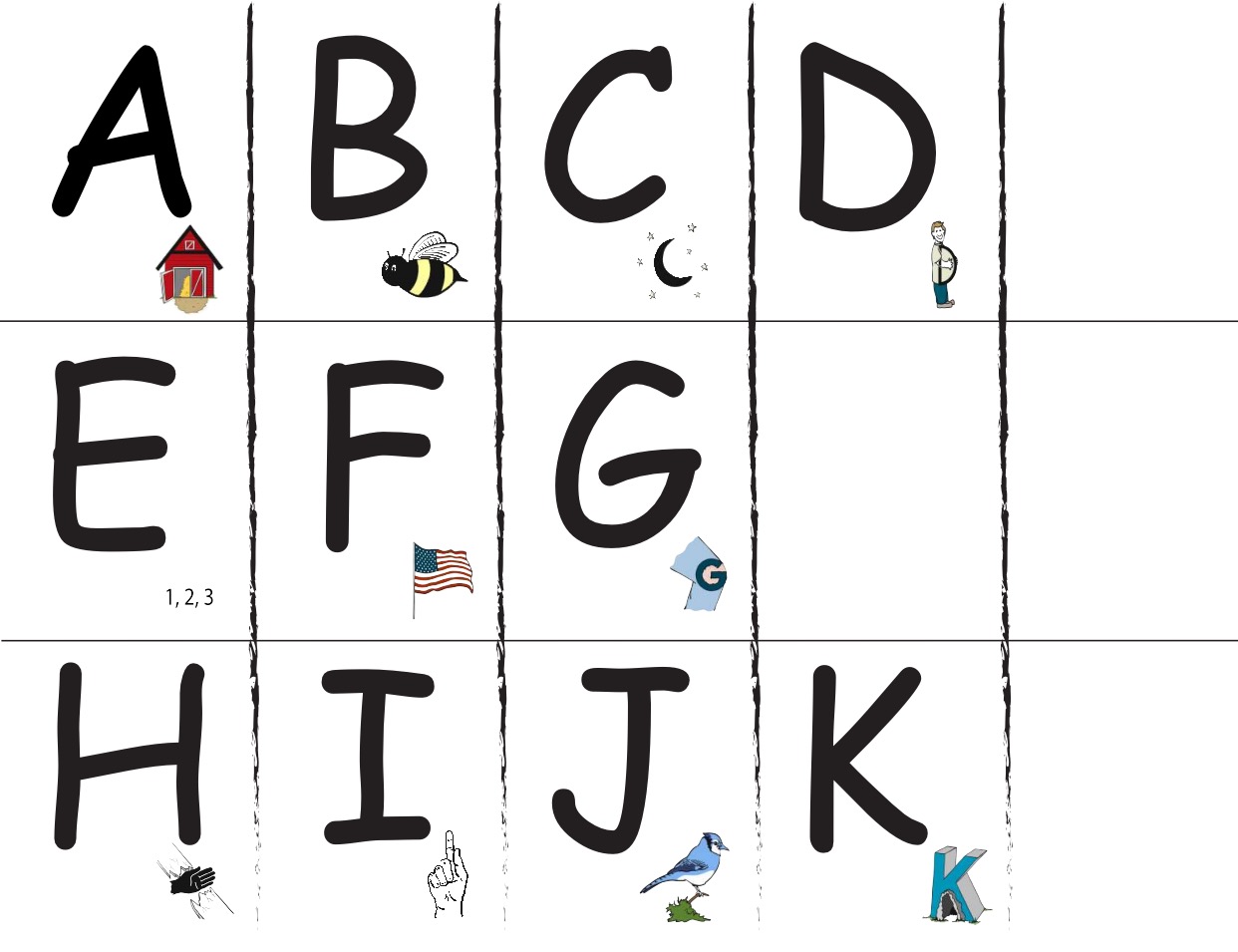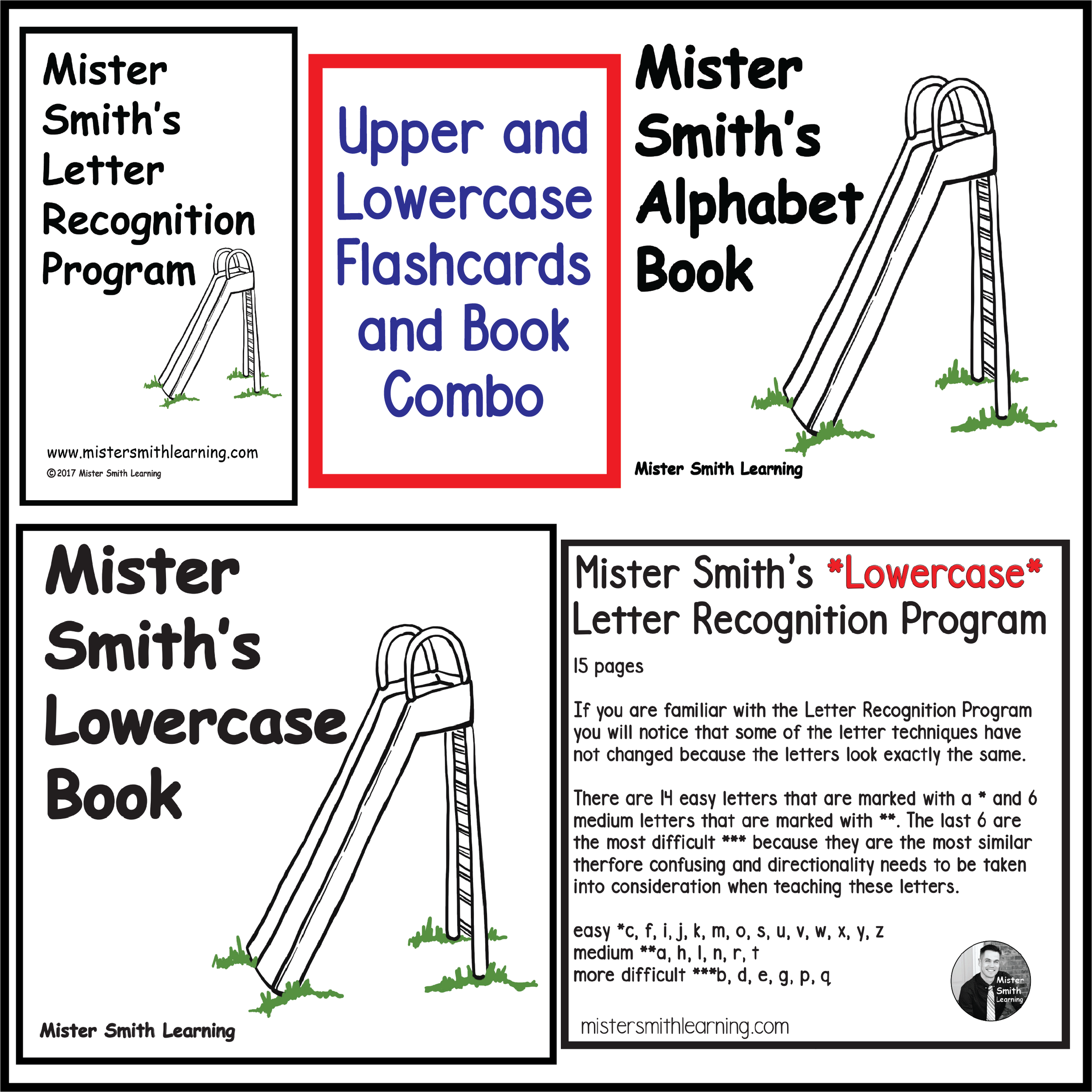I love puzzles. They are great for teaching self organization and planning skills plus puzzles can be set up to challenge all different age ranges. I view alphabet sequencing as a functional puzzle.
Beginning Phase
When children are learning their uppercase letters with Mister Smith's Letter Recognition Program I also like to simultaneously teach the concept of sequencing the alphabet.
The very first thing we need to work on is just singing the Alphabet Song clearly. At this point the student does not need to be able to recognize any of their letters, but this is where we can start correcting mispronunciations of certain letters (my son calls an s an x sometimes) and slowing down the L, M, N, O, P section.
Once we get the song down we can move onto using letters and getting used to one to one correspondence with the letters. This will help the child to start putting one name to one visual symbol at a time while going in a left to right direction. Just these two concepts can be a little tricky for an early learner to catch on to at first. I find that the easiest way to do this is through alphabet "chunks" that imitate the same rhythm as the Alphabet Song.
Opt in for Free Letter Recognition PDF Flashcard Samples
We would start by laying out the strips or "chunks of letters on the floor in a random order. Then we would start by trying to find the A, B, C, D chunk. If a child has the ability to do this then great. If not he or she will need to be guided through.
Teacher: Oh here is the A. Come see! Help me with the rest.
Then going hand over hand with the student we would point and say them at the same time. A, B, C, D....and then let the child finish and see if they will naturally say the letter E as in the song. If they get it then you will act so excited.
Teacher: You figured out the next letter! The letter E! Can you help me find it!
Once you find the E you can go through the process again. Hand over hand if need be or if they have the concept, he or she could try doing it themselves.
The beginning phase would continue on like this with just a focus on one to once correspondence. When you say a letter, you point at a letter. That will help them understand that each symbol has a name and the Alphabet Song is not just a song. Plus we get to introduce the fact that we start at the left and move to the right when working with letters.
Next Phase: Letter Identification- then sequence
This phase requires knowledge of a solid amount of letters of the alphabet in order to be successful. They will also need to know how to use one to one correspondence and move from right to left.
I like to spread out all of the uppercase letters of the alphabet on the floor and have the student start with the Uppercase letter A and progress from there. Then based on the child's skill, I would have them match the letters that are the easiest like O to o or X to x and progress to the more difficult matches.
A few suggestions.
Unless the student is very good with all of the prerequisite skills needed, this should not be an independent activity. (see matching cards to make this more independent) I suggest that the student be supported but not given the answers. Encourage the student and give them hints if they get stuck. Praise them when they are successful.
Benefits or what we get from this activity:
This will help solidify uppercase and lowercase letter identification.
Left to right practice.
Functionally puts their letter recognition skills into practice.
Helps the student transition from the logographic stage of reading to the alphabetic stage.
Have fun!!





